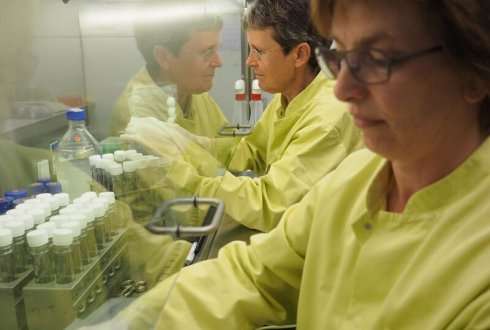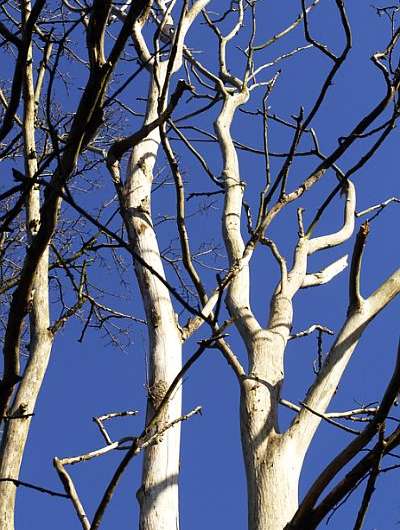Vaccine stops Dutch elm disease

Since 1992 over half a million Dutch elms have been 'vaccinated' against Dutch elm disease. Among these vaccinated trees, only 0.1% was infected by the fungus via the infamous elm bark beetle over recent years. The Wageningen UR business unit Biointeractions & Plant Health has been producing fungal spores for the vaccine since 2000. "It is not inconceivable that this type of vaccination could also be developed for other tree diseases in the future," says Bio-interactions & Plant Health phytopathologist Joeke Postma.
Valuable trees
The vaccine with which the elms are treated annually, called Dutch Trig, was developed in the 1980s by the former Phytopathological Laboratory Willie Commelin Scholten, an initiative of the universities of Amsterdam and Utrecht. These days the product is mainly used on valuable elms, for instance in the historical city centres, by tree care company BTL Bomendienst. The vaccinations are applied yearly when the trees are 25 per cent in leaf and the sap flow is optimal. Postma: "Around that time we also produce the spores of the Verticillium albo-atrum fungus. When you introduce the spores to the sap flow of the tree, they cause a resistance response in the elm, which also protects the tree against the Ophiostoma fungus that causes Dutch elm disease."
Fungus causes carnage
Since the beginning of the previous century, the Ophiostoma ulmi fungus, and later the related O. novo-ulmi fungus have devastated the European and North American elm population. Tens of thousands of trees have perished. "Nowadays there are resistant elm varieties on the market so new plantings shouldn't be affected," says Postma. "There are still many old elms in a number of city centres which have great cultural and ecological value. It is quite unique that the organic control of the fungus is fully realised by a tree care company, without the intervention of large multinationals for the production and distribution of the product."

Combating beetles
No official comparison has been made between treated and untreated trees since the vaccine was registered. "But we do have good indications for the effectiveness of the product," says Postma. "In the city of Rotterdam, for instance, the loss of elms, among both treated and untreated trees, is carefully registered. This shows that four times as many untreated trees are infected by Dutch elm disease as vaccinated trees."
Dutch elm disease is controlled in Amsterdam by rigorously clearing all infected trees to kill any beetles that could transfer the fungus. Despite this 0.5 per cent of the trees perish, while not one tree among the 90 trees in Amsterdam treated with the vaccine became infected over the same period.
More vaccination?
Postma believes that the principle of vaccination could also be effective against other tree diseases. "This may involve vaccinating chestnuts against the Pseudomonas bacterium which causes the bleeding disease, for example. But this demands a lot of research first. Each disease requires a specific control method."
More information: Joeke Postma et al. Twenty-four years of Dutch Trig application to control Dutch elm disease, BioControl (2016). DOI: 10.1007/s10526-016-9731-6
Provided by Wageningen University


















